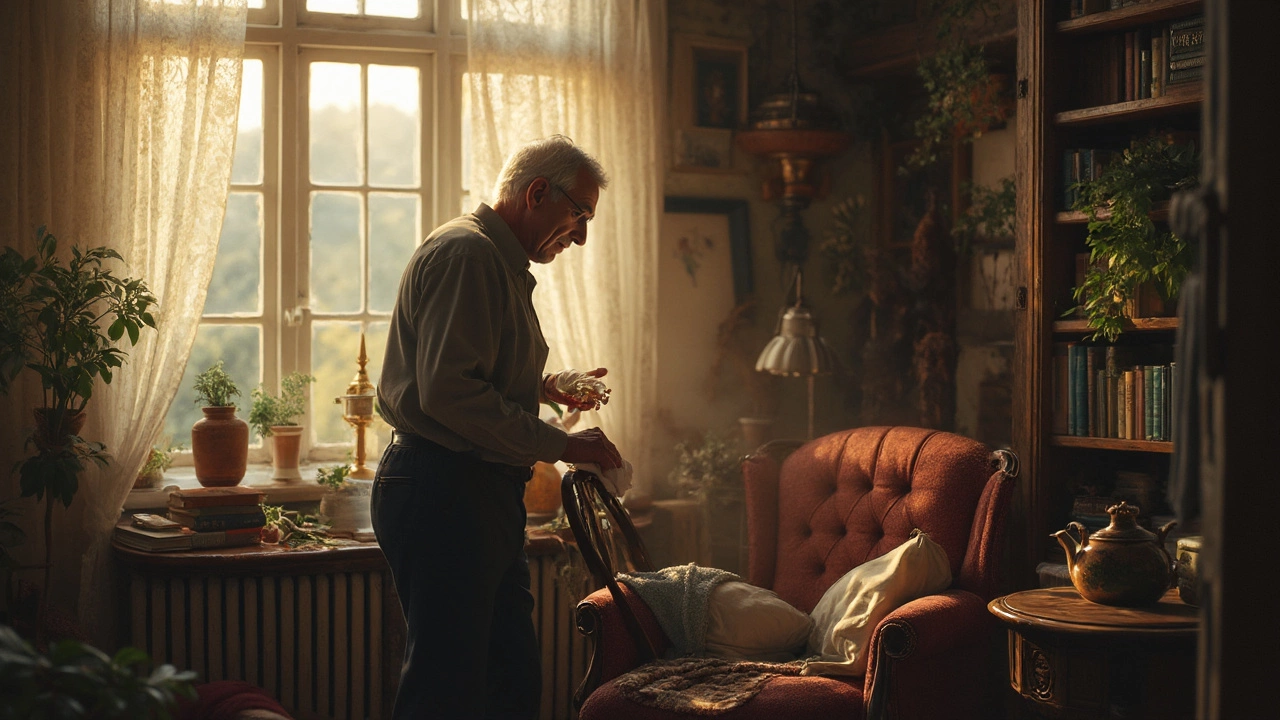Vinegar Cleaning Tips: Eco‑Friendly Ways to Keep Furniture Fresh
If you’re looking for a cheap, non‑toxic way to freshen up your home, vinegar is a surprisingly handy tool. It’s not just for salads – the mild acidity of white distilled vinegar cuts grease, loosens grime, and neutralises odours without harsh chemicals. Below you’ll find practical ways to use it on sofas, wood tables, metal frames, and even fabrics, so you can keep everything looking clean and feel good about the chemicals you avoid.
Why Vinegar Works
Vinegar’s power comes from acetic acid, which is strong enough to break down mineral deposits, soap scum, and stubborn stains, yet gentle on most finishes. Unlike bleach, it won’t bleach coloured fabrics, and it won’t leave a lingering chemical smell – the vinegar scent fades as it dries, often replaced by the fresh scent of whatever you add, like a few drops of lemon oil. Another bonus is that vinegar is biodegradable, so it won’t harm the environment when you pour it down the drain.
Practical Vinegar Cleaning Hacks
1. Dust‑free polishing for wood. Mix one part vinegar with two parts olive oil. Dampen a soft cloth with the blend and wipe the wood surface in the direction of the grain. The oil conditions the wood while the vinegar lifts dust and light stains. Use sparingly on finished pieces to avoid a greasy feel.
2. Stain removal on upholstery. Spot‑test first: dab a small hidden area with a 1:1 vinegar‑water mix. If the colour stays unchanged, spray the solution on the stain, let it sit for a minute, then blot with a clean cloth. For oily spots, sprinkle baking soda first, then spray the vinegar mix – the fizz helps lift the grease.
3. Glass and mirror shine. Combine one cup of water, a cup of vinegar, and a splash of dish soap. Spray on glass tables or mirrors, wipe with a lint‑free cloth, and watch the streaks disappear. No need for commercial glass cleaners that leave chemical residues.
4. Metal frame rust prevention. Soak rusty screws or small metal parts in a bowl of vinegar for a few hours. The acid dissolves rust, making it easy to scrub away. Rinse thoroughly and dry, then apply a light coat of oil to keep future rust at bay.
5. De‑odorising cushions. If a sofa cushion smells musty, sprinkle baking soda, let sit for 30 minutes, then vacuum. Follow with a light mist of a 1:2 vinegar‑water spray. The vinegar neutralises the odour without soaking the padding.
These tricks keep you from reaching for expensive, chemical‑laden products, and they work with items you probably already have in the kitchen. Remember to always ventilate the area when you use vinegar, especially in smaller rooms, and store any leftover solution in a sealed bottle to retain its potency.
Next time you spot a sticky spill or dull wood, reach for the vinegar bottle before you grab a spray can. Your furniture will stay cleaner, you’ll save money, and you’ll feel better about the chemicals you skip. Simple, effective, and kind to the planet – that’s the vinegar advantage.
Does Vinegar Really Remove Mold from Wood Furniture?
Tackling mold on wood furniture can be tricky, but vinegar might be the solution you need. This familiar household item is known for its natural cleaning properties and affordability. We'll explore how vinegar can effectively remove mold, why it works, and share tips on safely using it for wood furniture care. Read on to discover if vinegar is right for your mold-removal needs and get practical advice for maintaining your furniture's charm.
MoreHow Vinegar Can Help Stop Mold Growth on Storage Furniture
Vinegar is a simple and natural solution that many homeowners use to stop mold growth, especially on storage furniture. By understanding how vinegar works and the best ways to apply it, you can protect your cherished furniture items from the damaging effects of mold. This guide delves into practical tips for using vinegar effectively while offering insights on mold prevention strategies for your home. Discover the science behind vinegar’s mold-fighting properties and keep your surroundings clean and safe.
More

